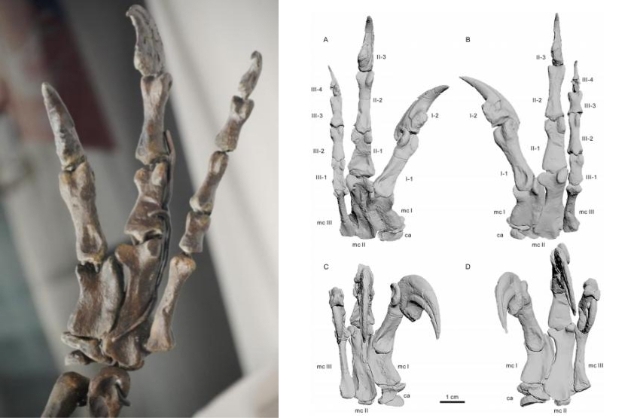Recently, the Grandview Museum of Natural Science ("the Museum"), a non-state-owned museum, published its latest research paper titled "Forearm range of motion in Allosaurus fragilis (Dinosauria: Theropoda)" in the international journal Historical Biology. This is the Museum's third paper, which has been included in SCI for just a few years since its establishment.

Research results published in the international journal Historical Biology
Building on the previous collaboration in 2022, where the Museum and Xing Lida's research team at China University of Geosciences (Beijing) jointly published pathological research findings on the Allosaurus fossil in the Museum's collection, both parties deepened their cooperation, overcame challenges, and employed new technologies and methods to conduct biomechanical research on Allosaurus, delivering these results.
The study centers on Allosaurus, an apex predator of the Jurassic era. The research team conducts an in-depth analysis of the forearm motions of Allosaurus, offering fresh insights into its hunting strategies and survival challenges.
Allosaurus, the most common theropod dinosaur genus in the Morrison Formation of the Late Jurassic period in North America, is renowned for the remains of at least 60 fossil skeletons. Research on the motion range of different body parts of Allosaurus has become a significant focus in the emerging paleopathological subfield.
Living approximately 155 to 145 million years ago during the Late Jurassic, Allosaurus is celebrated for its powerful build and agile movements, earning it the title of "Jurassic Dominator."
The Allosaurus specimen, nicknamed "David," exhibited at the Museum, is the only authentic Allosaurus specimen publicly displayed in China. This specimen is a rare and invaluable scientific treasure for its exceptional completeness, particularly its skull and abdominal ribs.
Since its debut in the Museum's dinosaur exhibit hall at the end of 2021, "David" has been a star attraction and a key focus of the Museum's scientific research.

Authentic specimen of Allosaurus "David"

Left: The forelimb palm of the Allosaurus fragilis specimen; Right: Digital mounting manus of Allosaurus fragilis, palmar view.

Left: Fingers of Allosaurus fragilis specimen; Right: Range of motion in the fingers of Allosaurus fragilis
In addition to the movement characteristics of Allosaurus forelimbs, the study also uncovers Allosaurus' astonishing resilience following an injury to its right shoulder.

Left: Image of the Allosaurus fragilis's forelimb; Right: Range of motion in the forelimbs of Allosaurus fragilis.
As a national second-grade museum and the first natural science museum in Guangdong Province, Grandview Museum of Natural Science houses over a thousand rare paleontological fossils, providing essential basic materials for paleontology research.

Above: Display for dinosaur eggshells found in Guangzhou; Below: CT scanners for pathological studies of Allosaurus.
In October of this year, the Museum comprehensively upgraded its "Dinosaur Home" exhibit hall, presenting research findings in a lively and engaging way. For example, there were CT scanner replicas showcasing research results and an interactive display featuring fragments of dinosaur eggshell fossils discovered by middle school students in Guangzhou. Such an exhibition aims to inspire young people to become "dinosaur hunters" in Guangzhou.
Photo | Grandview Museum of Natural Science
Editor | Yu Lulu, Liu Linghzi, James, Shen He
















